TL;DR
Nations can be as narcissistic as individuals. From Trump’s America to Putin’s Russia, from Israel’s siege story to Australia’s ANZAC myth, fragile identities are shielded by weaponized narratives. These myths comfort and unite, but they also distort, deny, and divide. True maturity lies not in stories that protect us from shame, but in narratives spacious enough to hold both pride and pain.
In a stadium in Ohio, Donald Trump raises his hands to the crowd and insists that America’s greatness has been stolen. He points to enemies within and without — elites, immigrants, globalists — and assures his followers that only by reclaiming the story of America can the nation be made whole again.
In Moscow, Vladimir Putin leans across a long table and describes Ukraine not as an independent state, but as a wayward child. His words reach millions through carefully choreographed broadcasts, a story of historic destiny in which aggression becomes restoration, and conquest is recast as protection.
In Tel Aviv, Benjamin Netanyahu invokes the Holocaust while addressing parliament. Israel, he says, is under existential threat, besieged on all sides. The reality of overwhelming military superiority is softened by a narrative of perpetual victimhood, turning critique into betrayal.
And in a small town in Victoria, children march on ANZAC Day, poppies pinned to their uniforms. The speeches describe a nation built on mateship, courage, and sacrifice. Yet no mention is made of the violence that accompanied colonisation, nor of the First Nations voices absent from the ceremony.
Four countries, four very different contexts — and the same underlying pattern. The story is not a mirror, it is a shield. Nations, like individuals, can become narcissistic. When identity feels fragile, the narrative hardens. And when the story is weaponized, truth becomes secondary to survival.
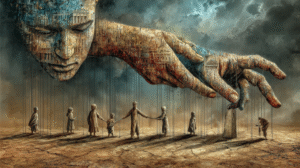
From the Personal to the Collective
Most of us recognise narcissism first in its intimate form. A partner who twists every argument to avoid blame. A parent who remembers family history in ways that erase your pain but highlight their sacrifices. A colleague who steals credit and then insists you are imagining it. The pattern is familiar: when the ego is too fragile to bear responsibility, the story is rewritten.
Psychologists describe this as narrative weaponization — not just lying, but bending memory, framing, and language so that the narcissist always emerges intact. At the individual level, this can look like gaslighting, DARVO (deny, attack, reverse victim and offender), or endless self-mythologising. The goal is not coherence but control.
What is less often acknowledged is that groups do the same thing. Entire nations, political movements, even corporations can act as if they too have egos to protect. When their sense of specialness feels under threat, they reach for the same tactics: rewriting history, denying harm, framing critics as aggressors. Psychologist Agnieszka Golec de Zavala calls this collective narcissism — the conviction that one’s group is exceptional, coupled with hypersensitivity to any suggestion that others do not recognise that greatness.
The resemblance is more than metaphor. Just as individuals rely on stories to anchor their sense of self, societies rely on collective myths to stabilise identity. And when those myths are challenged, the reaction can be as fierce and brittle as any narcissist at a family dinner.
The Fragile Ego of Nations
The ego of a nation is no less fragile than that of a person. What looks like pride is often covering over an old wound or a fear of decline. The louder the insistence on greatness, the more brittle the identity underneath.
In the United States, “Make America Great Again” offers the comfort of a golden age that never quite existed. The story works because it suggests betrayal: greatness was stolen, and with the right leader it can be restored. Beneath the red hats is an anxiety that America’s dominance is fading — economically, culturally, even morally — and the story of theft provides relief.
In Russia, the story is one of destiny. Ukraine is not a neighbour but a brother that has been lured away by hostile outsiders. By framing invasion as restoration, Putin shields his people from the shame of decline. The pain of lost empire is recast as righteous mission, transforming aggression into necessity.
Israel’s story is more complex but no less narcissistic. Born from real trauma, the narrative of perpetual siege has hardened into a shield against accountability. Even overwhelming power can be framed as self-defence if the nation sees itself as forever on the brink of annihilation. In this inversion, critique is not disagreement but existential threat.
Australia, in its quieter way, tells a story of egalitarian mateship. The ANZAC myth binds a nation together, but it also serves as a mask. It allows Australians to celebrate courage and sacrifice while sidestepping the unfinished story of colonisation. National pride is protected by omission, by a silence that keeps the wound of dispossession out of sight.
These examples are not unique. China draws strength from its “Century of Humiliation” narrative, fuelling nationalism with the promise of restored dignity. The United Kingdom framed Brexit as the recovery of sovereign greatness, a story of liberation rather than isolation. India’s Hindutva movement seeks to reclaim an imagined past where Hindu identity was pure and dominant, recasting pluralism as weakness.
Different histories, different wounds — but the same psychological strategy. The nation insists on its greatness precisely where it fears being diminished. The story becomes armour, not because the group is strong, but because the identity beneath it is too fragile to face contradiction.
DARVO at Scale
When psychologists describe the tactics of narcissists, one acronym recurs: DARVO — Deny, Attack, Reverse Victim and Offender. At the level of a relationship, this is the partner who denies the hurt, lashes out when pressed, and then claims to be the one unfairly treated. At the level of a nation, the same pattern plays out with remarkable consistency.
In the United States, the “stolen election” narrative is pure DARVO. Trump and his allies denied the legitimacy of the vote, attacked officials and courts that challenged them, and then recast themselves as the victims of a vast conspiracy. The aggressor became the aggrieved, and millions found emotional refuge in that inversion.
In Russia, DARVO provides cover for invasion. The Kremlin denies Ukraine’s legitimacy as a sovereign nation, attacks it militarily, and then insists that Russia itself is the victim of NATO encirclement. A war of aggression is reframed as self-defence, a textbook reversal of victim and offender.
Israel, too, employs DARVO in its narrative armour. Criticism of settlement expansion or military action is not treated as legitimate debate but as an attack on Israel’s very right to exist. Dissenters are accused of antisemitism, reversing critic and aggressor in one stroke. The result is that structural power can be wielded while still inhabiting the role of the threatened victim.
Australia’s DARVO is subtler but persistent. Colonial violence is often denied outright or softened into “settlement.” Calls for truth-telling or treaty are met with attack — branded as divisive or un-Australian. And then the reversal: First Nations communities are framed as responsible for their own disadvantage, while the wider nation casts itself as unfairly blamed.
What unites these examples is not shared ideology but shared psychology. Nations, like narcissistic individuals, struggle to hold both pride and culpability. When faced with criticism, they reach for the same defence: it was not our fault, we are under attack, we are the true victims. DARVO scales up from the family argument to the parliamentary speech, from the therapist’s office to the battlefield.
The Comfort of the Weaponized Story
If these stories are so distorted, why do they work? The answer lies not only in manipulation from above but in the emotional needs they meet below. Weaponized narratives soothe. They provide certainty, belonging, and moral clarity at times when reality feels unbearably complex.
For citizens facing dislocation — job losses, cultural shifts, political scandals — the narcissistic story offers a simple explanation. Someone else is to blame. America was great until outsiders stole it. Russia was whole until enemies divided it. Israel is always one step from annihilation. Australia was a fair go nation until critics began to dredge up uncomfortable truths. The narrative reorders chaos into a drama of heroes and villains.
There is comfort in this clarity. It tells people not only who they are, but also where they belong. By joining the chant, wearing the colours, or attending the commemoration, they become part of a shared defence of identity. The story is not just told to them; it is enacted with them, knitting individuals into a collective that feels both righteous and secure.
But comfort does not come without cost. A story that shields also blinds. By framing opponents as enemies, it forecloses empathy. By denying responsibility, it blocks repair. And by simplifying reality into victim and aggressor, it leaves no room for the ambiguity that real maturity demands.
The most seductive feature of these narratives is that they offer not just safety but permission. They authorise action: to invade, to exclude, to suppress, to look away. The soothing story becomes a rallying cry, converting fear into certainty and certainty into power.
Amplifiers: Media, Ritual, Technology
Stories do not spread on their own. They are engineered, repeated, and ritualised until they feel like common sense. Narcissistic narratives at the level of nations depend on amplifiers that make the distorted story more believable than the complicated truth.
State-controlled media is the most obvious amplifier. In Russia, television anchors frame the invasion of Ukraine as “denazification,” repeating the phrase until it becomes unquestioned reality for millions. In China, tightly managed news cycles revive the “Century of Humiliation” whenever foreign policy tensions rise, ensuring that citizens experience each diplomatic disagreement as part of a grand historic wound.
But democracies are not immune. In the United States, cable networks and partisan podcasts serve as echo chambers. Fox News repeats the language of stolen elections and witch hunts, while social media platforms algorithmically reward outrage, driving the narrative deeper into everyday conversation. In Israel, WhatsApp groups and online forums circulate stories of perpetual siege, hardening community identity around grievance.
Ritual also carries the story. Schoolchildren marching on ANZAC Day enact a national myth through uniforms and poppies, long before they are old enough to question it. Brexit slogans were plastered on buses and chanted at rallies, embedding the idea of regained sovereignty into the muscle memory of public life. Religious processions, military parades, national holidays — these are not mere ceremonies but narrative reinforcements, turning myth into lived experience.
Technology accelerates all of this. Algorithms magnify divisive content because it keeps users engaged. Deepfakes and AI-enhanced propaganda are already blurring the line between story and evidence. The effect is to saturate the environment with simplified narratives until resistance feels not only difficult but disloyal.
The narcissistic story, once seeded, grows through these amplifiers into a canopy that overshadows alternative voices. Truth may still exist underneath, but light struggles to reach it.
Not All Myths Are Narcissistic
It would be easy to conclude that all national stories are corrupt, that every myth is a mask for denial. But that would miss something essential. Collective storytelling is not inherently narcissistic. It can also be healthy, creative, and resilient — a way of holding people together without erasing truth.
The difference lies in fragility. Narcissistic myths cannot bear contradiction. They shatter or lash out when confronted. Healthy myths, by contrast, bend. They tolerate critique, absorb complexity, and expand to include new voices.
Consider New Zealand’s evolving bicultural narrative. While far from perfect, it acknowledges both Māori sovereignty and the shared identity of a modern nation. The myth of “Aotearoa” is still forming, but it is wide enough to hold contradiction — pride and shame, tradition and change.
Or look at the Scandinavian story of equality. It simplifies reality, yes, but it also creates social expectations that tolerate critique and reform. When flaws are exposed, the narrative is not destroyed; it stretches.
Even within Australia, there are glimpses of healthier stories. Some communities are weaving ANZAC remembrance with recognition of frontier violence, allowing mourning and pride to coexist. The Uluru Statement from the Heart is itself an invitation to a broader story — one that insists on truth-telling while offering a path toward shared belonging.
The challenge is not to abandon myth but to distinguish between those that protect fragile egos and those that cultivate durable identities. One seeks comfort through denial; the other builds resilience through honesty.
When Stories Break (and Rebuild)
What happens when a collective story can no longer hold? When reality presses in so forcefully that even repetition, ritual, and denial cannot keep the cracks from showing?
Sometimes the narrative collapses violently. The Soviet Union’s mythology of inevitable progress dissolved almost overnight, leaving citizens disoriented and humiliated. In South Africa, the fiction of apartheid’s legitimacy finally crumbled under global pressure and internal resistance, giving way to truth commissions that sought, however imperfectly, to rebuild identity on new terms.
At other times, the breaking is slower, almost imperceptible. In Australia, the silence around colonisation has been punctured not by one event but by a steady insistence on truth-telling from First Nations communities. Each acknowledgement of Country, each memorial to massacres, chips away at the old myth of peaceful settlement. The story is not destroyed in a single blow but rewritten line by line.
Counter-narratives often begin fragile. Russian dissidents writing from exile, Israeli peace activists protesting in the streets, American whistleblowers challenging the myth of purity — all are mocked, marginalised, or branded traitors. Yet over time, such voices can accumulate force. What begins as a crack becomes a fracture, and eventually, a new story can emerge.
Art and literature often lead this process. A poem, a film, or a painting can hold contradictions that politics cannot. Generations, too, play their part. Younger citizens, less invested in the myths of their parents, may embrace more complex identities. What feels like betrayal to one generation can feel like liberation to the next.
But breaking carries risk. Just as an individual narcissist can erupt when their story is challenged, nations can lash out when myths are threatened. Backlash, rage, and even violence often accompany the unraveling. The work of rebuilding requires not just exposing the lie but constructing a story thick enough to carry both pride and shame.
The Measure of Maturity
Return to those scenes. The chants of stolen greatness in an American stadium. The Russian president rewriting borders as if history were clay. The Israeli parliament framing overwhelming power as perpetual siege. The Australian schoolchildren marching beneath banners of mateship, silent on the wounds beneath their feet.
Each is a story told for protection, not for truth. Each is an armour plated around a fragile identity. And each shows that narcissism is not just the pathology of individuals but a condition of groups, nations, even cultures.
The danger is not only in the leaders who craft these stories but in our willingness to collude with them. To find comfort in simplicity. To take refuge in certainty. To prefer belonging to complexity.
If maturity for a person means the ability to hold both strength and vulnerability without denial, perhaps maturity for a nation is the same. To be proud without being blind. To remember without erasing. To belong without excluding.
The real test of collective identity is not whether we can tell a story that makes us feel special, but whether we can live inside a story that holds contradiction without collapse.
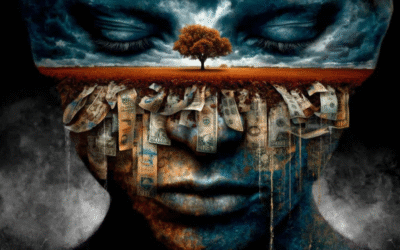
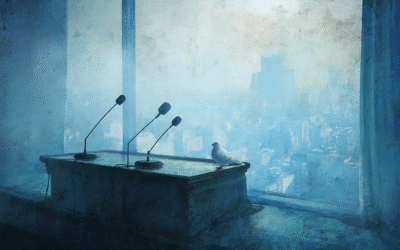
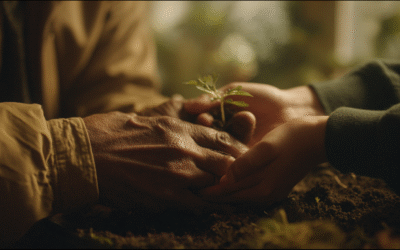
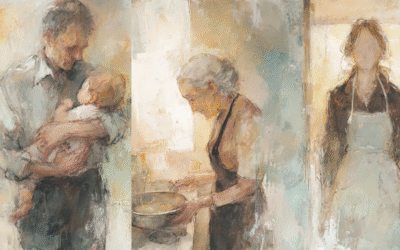
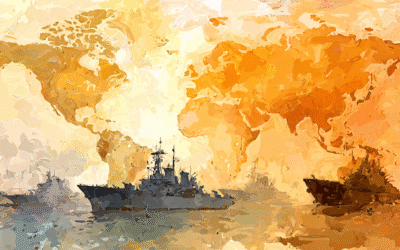
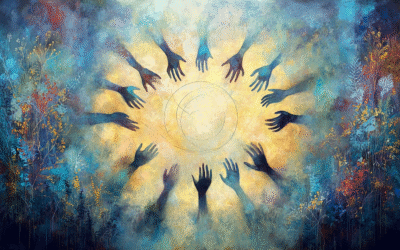




0 Comments